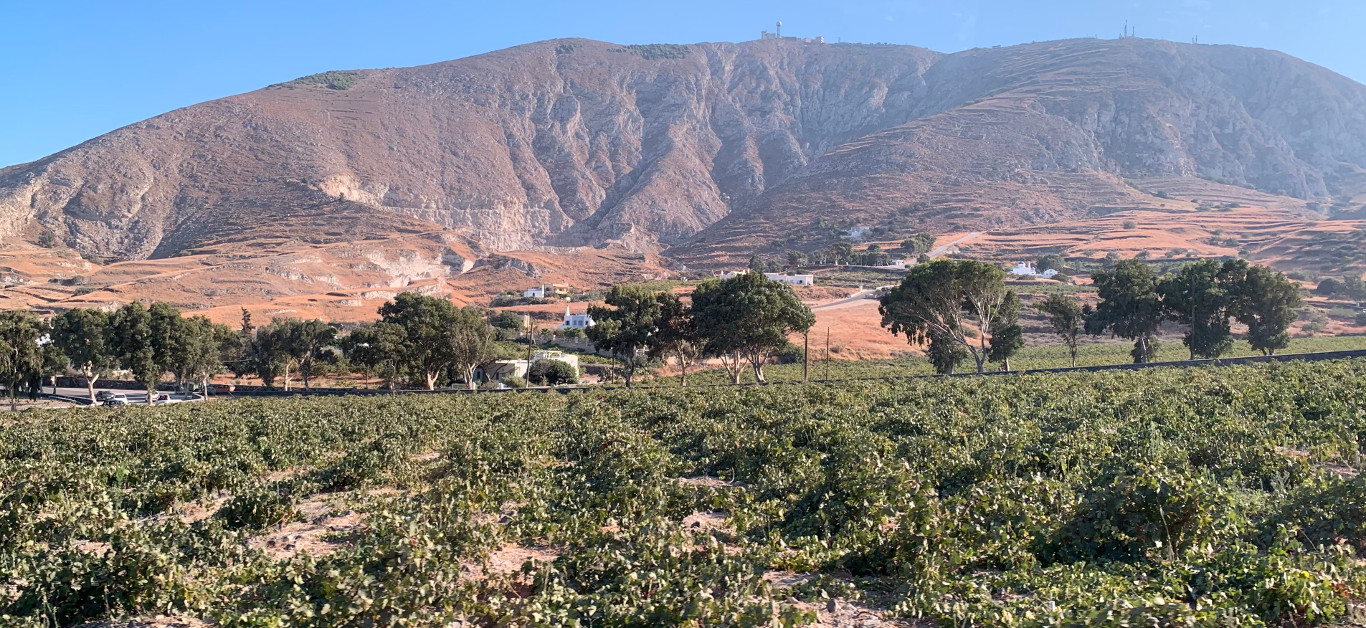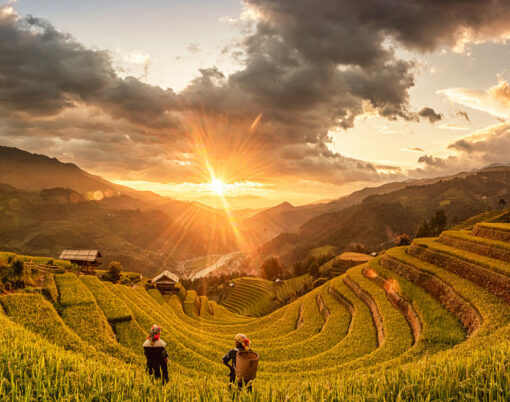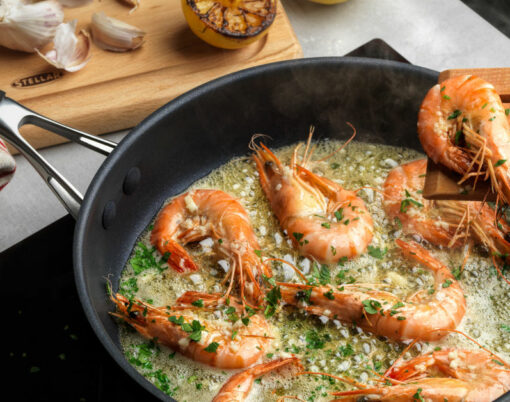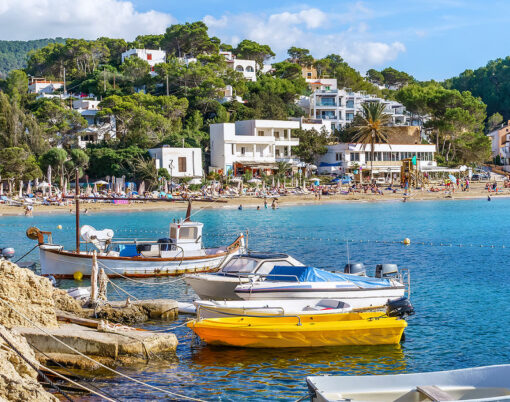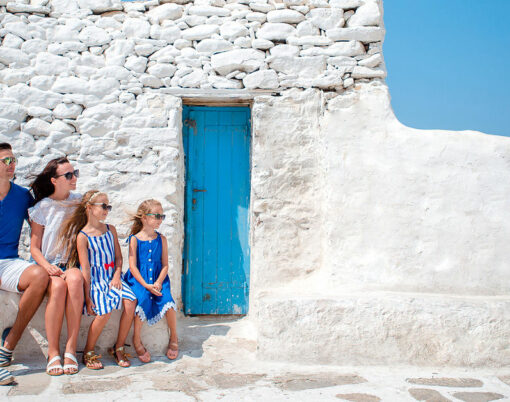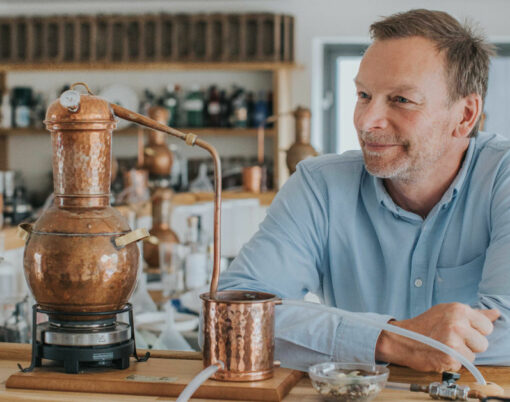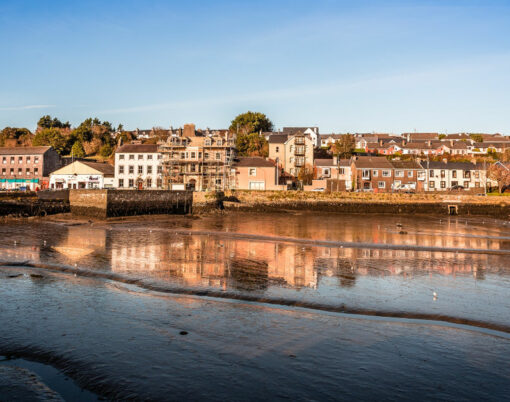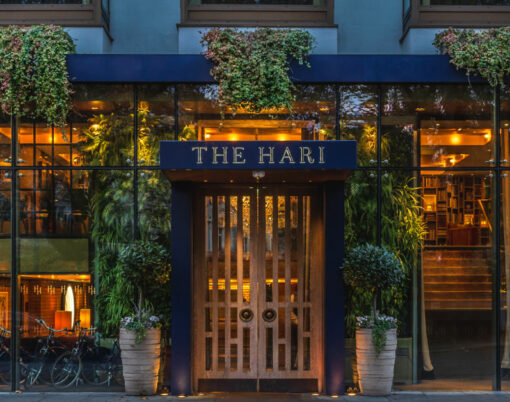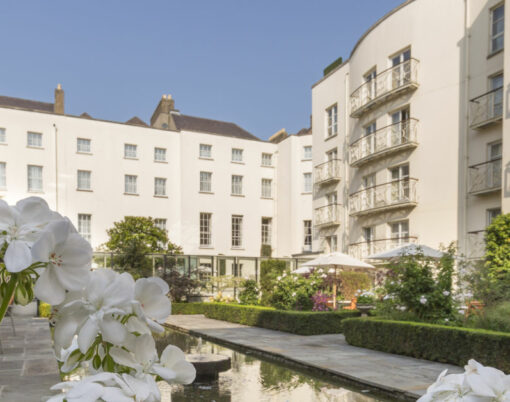‘The vineyards are over there,’ says Gregory Georgiadou, the enthusiastic co-owner of Santorini Getaways and our winery tour guide.
He’s pointing to a large field marked with white stones; patches of shrubs sprout from the dry soil. Puzzled, we follow him towards the shrubby field and realise we’re actually looking at twisted vines woven into basket shapes.
Strong winds, rocky soil, and a dry, hot climate make for extremely difficult growing conditions in Santorini, but the hand-twisted Koulara technique – thought to be the world’s oldest – ensures the vines thrive in the harsh environment.
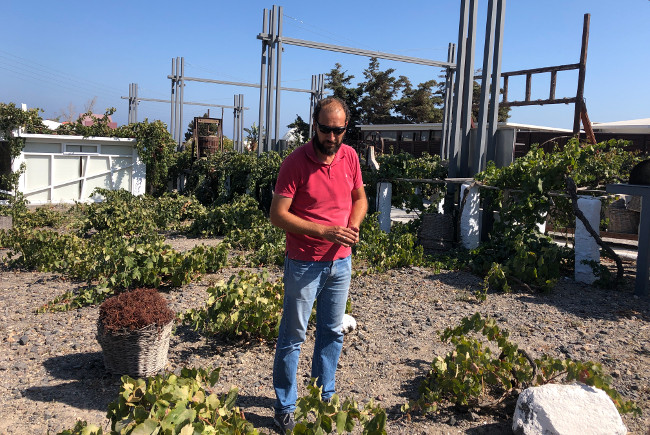
A close proximity to the rocky soil helps the vines to absorb water – there’s no irrigation so they rely on the humidity from a sea fog that blankets the island each night. The grapes also grow on the inside of the basket, protecting them from strong winds.
We’re at the Koutsoyannopoulos Vineyard and Wine Museum – the first stop on our winery tour – and keen to learn more about the island’s viticulture, we head inside. The underground museum takes you chronologically through the history of wine on the island and its volcanic past.
The mineral-rich rocks left behind from the eruption give the wine a low PH and high acidity, creating a fresh, lively taste. Life-sized models help illustrate the winemaking process – they’re a little creepy but help to bring the process to life.
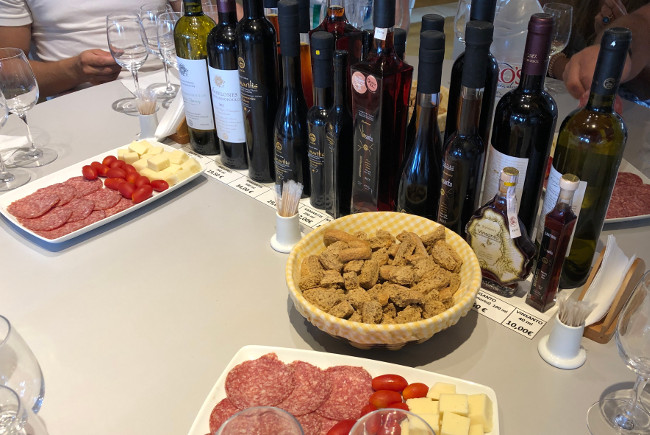
We regroup in the tasting room and sample four wines from the Koutsoyannopoulos vineyard, including the famed Vinsanto (don’t get it confused with the Italian Vin Santo, Santorini’s is the certified original). The Vinsanto wine is made from grapes dried in the sun for 12-14 days, and strict rules mean all bottles must contain at least 51% of Santorini’s Assyrtiko grape. The result is an intensely rich, sweet wine, which pairs perfectly with sugary desserts like Baklava.
It’s a short drive to winery number two, but Gregory keeps us entertained, feeding us interesting stats and facts about the island and its thriving tourism industry. Over two million tourists visited the small island in 2018, all eager to experience the caldera sunset, black sand beaches, and of course, the wineries.
We drive through the gates of Estate Argyros, 300 acres of shrubby vineyards surround us. Dry, craggy mountains frame the modern, whitewashed building which houses the estate’s winery and tasting room. Inside, we’re greeted by high ceilings and huge windows, the blue haze of the sea visible across the vineyards.
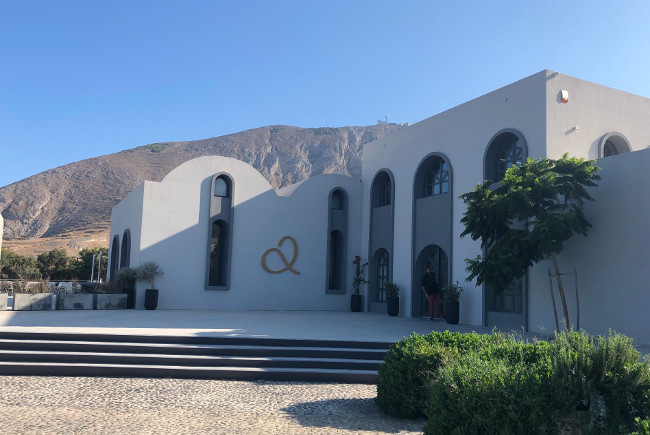
The sophisticated tasting room is a new addition to the historic estate, which first started producing wine in 1903. We take a quick tour, starting at the vineyard – where some vines are over 200 years old – and pop our heads into the fermentation room where huge stainless-steel vats start the winemaking process.
There’s also a lab where oenologists (wine scientists) test all batches to ensure that only the best wine is bottled. The estate grows the Assyrtiko grape variety (one of Santorini’s most prized), and we finish the tour with a tasting. My favourite is the Santorini Argyros Assyrtiko, a crisp yellow wine with notes of citrus and lemongrass.
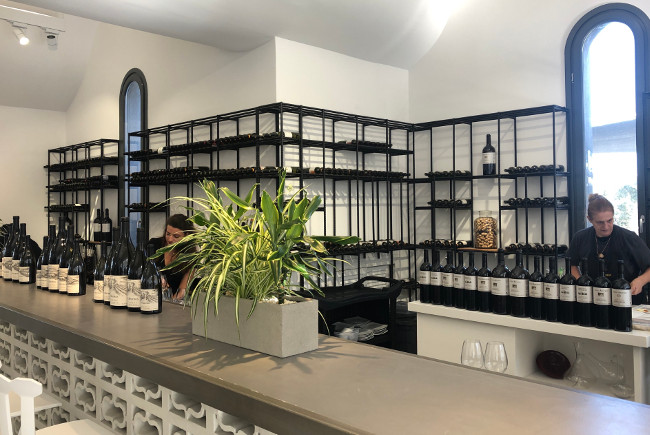
Back in the mini-van and en route to the next vineyard, Gregory tells us about the islands locally grown food: ‘Don’t miss the pureed fava beans topped with spring onions and capers, it’s a Santorini special.’ We arrive at the Venetsanos Winery, the third and final stop on the tour.
Nestled into the cliffside, the winery has stunning views over Santorini’s caldera. Nowhere else on the island is its volcanic history so apparent than when gazing across the caldera – a sea-filled crater left behind from the 1646 BC eruption – the aptly named Burnt Island in its centre.
We head inside the wineries’ cliffside cave and take a look at the original production area (which has since moved into a bigger dwelling next door). It took the Venetsanos family 8 years to excavate the cave for wine production, but the sunset views were surely worth their efforts.
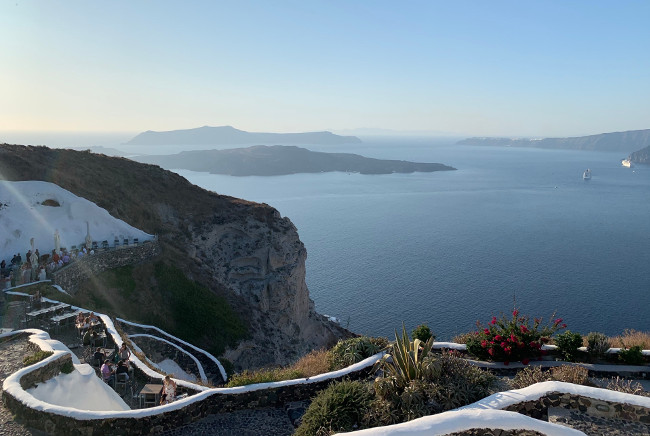
The late afternoon sun throws a warm, copper glow across the cliffs and we enjoy several tasters – the stunning views over the caldera are a perfect backdrop. We try a crisp, white Assyrtiko wine (we’re old hats at this now), and a lovely Anagallis Rosé which was surprisingly dry considering its vibrantly pink colour.
We finish the tasting and move upstairs to watch the sunset. The glowing fireball slips out of view and merges into the horizon within minutes. It’s a stunning spectacle, made even more magical thanks to the numerous wine tasters I’ve been enjoying all afternoon.
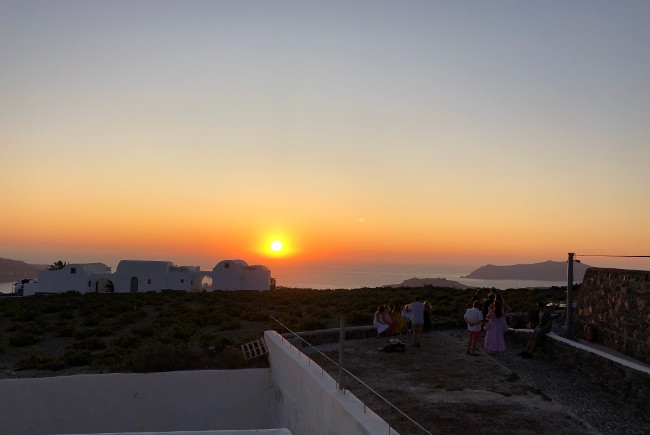
When the tour finishes, Gregory drops us into Fira – the largest town on the island. We leave with a list of the best restaurants and armed with all our newly acquired wine knowledge, we know exactly which bottle we’re ordering with dinner.
Emilia Harris was a guest of Santorini Getaways. A half-day Santorini Wine Tour Sunset Getaway is €125 / £108.35 per person. Bookings can be made at santorinigetaways.com












